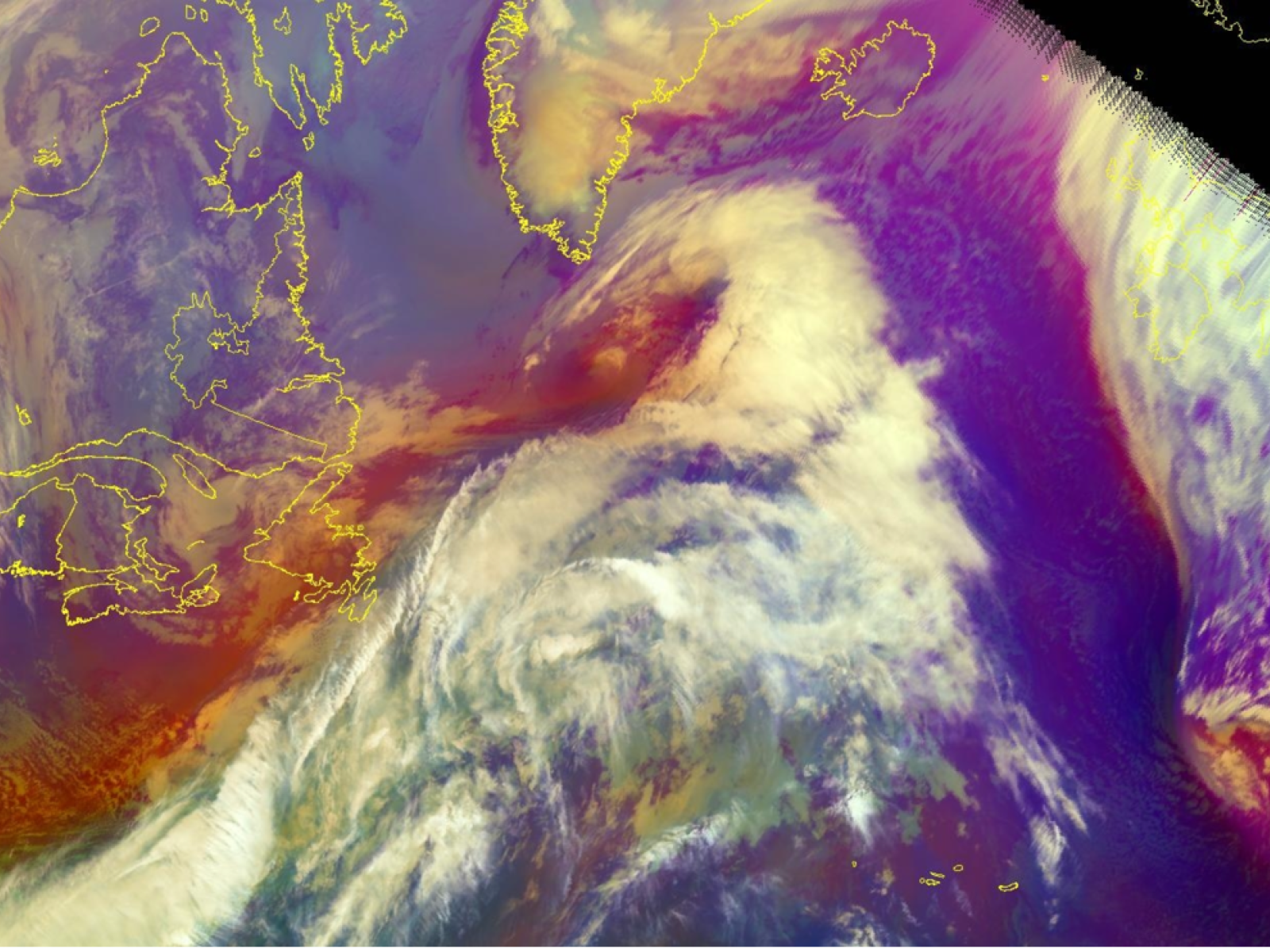Internal Variability Causes Disparity in Arctic Atmospheric Rivers Trends
Research indicates shifts in two climate oscillations drive spatial differences in Arctic atmospheric river trends over the past four decades

Intense water vapor intrusions in the atmosphere are responsible for most of the poleward moisture transport into the Arctic, which have been found to occur more frequently through the pathway over the North Atlantic Ocean in a warming climate.
(Image: National Oceanic and Atmospheric Administration/National Environmental Satellite, Data, and Information Service Center for Satellite Applications and Research)
The Science
Arctic atmospheric rivers (AR) which represent intrusions of warm and moist air into the Arctic, can effectively drive weather extremes and trigger subsequent impact on sea ice and climate. Given the continuous global warming and increased atmospheric moisture in the past four decades, researchers sought to understand how internal variabilities of the climate system and human activities contribute to an upward trend of ARs that differs in the Atlantic sector of the Arctic versus the Pacific sector. Using multiple sources of observations and model experiments, scientists from Pacific Northwest National Laboratory and collaborating institutions (University of California Los Angeles; University of Washington, Seattle; Indiana University, Bloomington; University of Colorado, Boulder; and Naval Postgraduate School, Monterey) found that Arctic AR frequency has increased twice as much over the Atlantic sector as the Pacific one. The researchers attribute this spatial disparity, as well as the discrepancies in data from models and observations, to a shift in sea surface temperature (SST) patterns.
The Impact
The Interdecadal Pacific Oscillation (IPO) and the Atlantic Multidecadal Oscillation (AMO), defined by regional SST anomaly patterns, are the dominant internal modes of variability over the Pacific and North Atlantic, respectively. A shift in either oscillation can accelerate or dampen the Arctic warming and sea ice loss through the modulation of atmospheric circulation and poleward energy transport. As part of the poleward energy transport, Arctic ARs are found to vary in their occurrence frequency as the IPO and AMO undergo changes in their phase, which explains the observed spatial disparity in Arctic ARs. Climate models cannot capture the observed IPO and AMO changes and thus mischaracterize the spatial disparity. Given the strong connection between ARs and these two interdecadal modes, improving decadal prediction of shifts in the IPO and AMO may lead to a better projection of future Arctic AR changes.
Summary
The Arctic has undergone dramatic changes in recent decades, warming at a rate nearly four times faster than the global average—a phenomenon known as Arctic amplification (AA). Among all the poleward energy transport components contributing to AA, atmospheric moisture transport is especially effective in inducing Arctic warming. It has long been known that ARs, long and narrow corridors of intense moisture transport in the atmosphere, are responsible for most of the poleward atmospheric moisture transport over mid-latitudes, suggesting their potential contribution to AA.
In this study, scientists show that Arctic ARs over the Atlantic sector have been increasing about twice as fast as those over the Pacific sector between 1981 and 2021. This uneven increase is driven by a greater moistening of the atmosphere over the Atlantic sector. On the other hand, ensemble simulations from multiple climate models all show that human activities, or anthropogenic forcing alone lead to a nearly uniform increase in ARs over the Arctic. The discrepancy between the observed and modeled trends can be reconciled by accounting for the observed SST patterns and sea ice in the model experiments. Researchers also found that the observed negative and positive phases of the IPO and AMO are critical to explaining the observed Arctic AR trends. Both the IPO negative phase and AMO positive phase favor an increase in ARs over the Atlantic sector and a decrease over the Pacific sector through their influence on atmospheric moisture and large-scale circulation. Under global warming, Arctic ARs are expected to increase at an even faster pace, mostly driven by the increasing atmospheric moisture. Given the strong coupling between Arctic AR variability and the IPO/AMO, improved outcomes in future climate oscillations predictions are expected to boost the understanding of future Arctic ARs and their impact on sea ice and AA.
PI Contact
Hailong Wang, Pacific Northwest National Laboratory, hailong.wang@pnnl.gov
Funding
This research has been supported by the Department of Energy (DOE) Office of Science Regional and Global Model Analysis program area as part of the High-Latitude Application and Testing of Earth System Models-Regional Arctic System Model (HiLAT-RASM) project.
Published: March 28, 2024
Ma, W., Wang, H., Chen, G. et al. “The Role of Interdecadal Climate Oscillations in Driving Arctic Atmospheric River Trends.” Nat Commun 15, 2135 (2024). DOI: 10.1038/s41467-024-45159-5